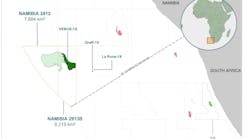GEODynamics says that its EVOLV+FracTrap Zone Isolation System provides both ball retrieval and composite plug technology in one tool.
GEODynamics has introduced a new technology in composite frac plug systems, called the EVOLV+FracTrap Zone Isolation System. The company says that the new technology provides both ball retrieval and composite plug technology in one tool while delivering risk-free, ball-on-seat, plug-and-perf isolation solutions to operators. This combination is designed to make water and time savings possible by eliminating traditional risks with the additional benefit that allows operators to test casing pressure prior to perforating operations.
The new frac plug technology is said to be the next generation in well completion design and performance, optimized for the entire lifecycle from run, set, test, hold, and mill. The innovative slip technology prevents pre-sets, allowing for indefinite hold time under pressure. Having run ball-on-seat, operators are able to ensure the plug has been properly set and sealed prior to perforating operations. Then, once the hydraulic fracturing procedure has been completed, the mule shoe design provides positive lock-up for drill out of the plug. Consistent drill out times for a fully composite plug is between eight to 12 minutes with a favorably sized debris matrix returned from clean out operations. Depending upon well completion requirements, the system is available in either composite or cast-iron slip models.
The system’s water and time-saving technology allows the frac ball to be conveyed down with the perforating equipment to mitigate the risk of costly intervention should an unforeseen event prevent injecting into the well. The method of pumping the ball-on-seat is a field-proven and time-saving technique; however, until now it bore a considerable cost risk should injection failures occur. EVOLV+FracTrap’s patented setting adapter and ball retrieval technology reduces this risk. Utilizing this new system, the frac ball confidently can be run-on-seat using significantly less water and time.
The overall economic benefit of the technology varies depending upon several factors, such as size of casing, length of lateral, and whether the ball is being pumped from surface or only along the lateral. The company uses computer modeling software to estimate job savings based on detailed input that is specific to the well’s construction. Conservative estimates for a well with 5.5-in. casing and the ball pumped from the surface show savings of 14.5 hours of pumping time and over 12,600 bbl of water. Employing the new technology has potential savings up to $100,000 per well.




